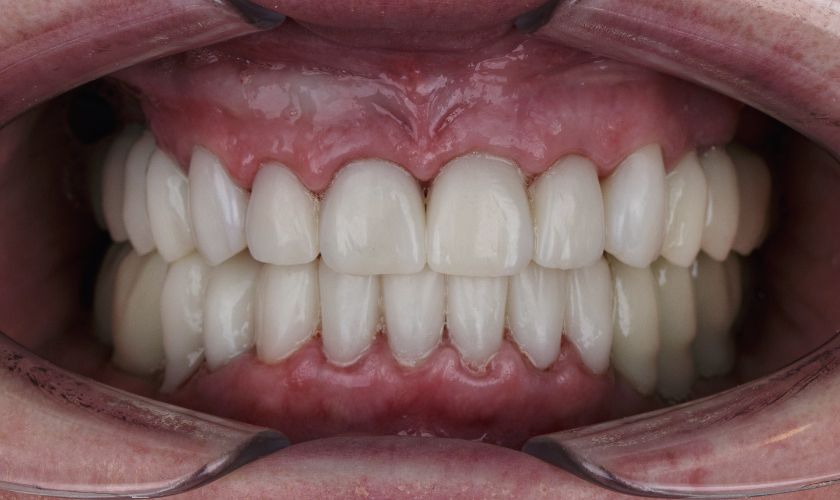2860 S Seacrest Blvd, Boynton Beach, FL 33435
What is Dental Bonding and how it is being done?

Dental bonding, a versatile and minimally invasive cosmetic dentistry procedure, has become increasingly popular for addressing a range of dental issues. From chipped and discolored teeth to gaps and minor misalignments, dental bonding offers a quick and effective solution. In this comprehensive guide, we will delve into what dental bonding is, the procedure involved, and its myriad applications in enhancing your smile.
Understanding Dental Bonding
Dental bonding is a cosmetic dentistry technique that involves the application of a tooth-colored composite resin to improve the appearance of a tooth. This resin is a pliable material that, when applied and shaped by a skilled dentist, can seamlessly blend with the natural tooth structure. The bonding process is aptly named, as it involves creating a strong bond between the tooth and the composite material, resulting in a durable and aesthetically pleasing restoration.
Indications for Dental Bonding
- Repairing Chipped or Cracked Teeth: Dental bonding is an excellent solution for addressing minor chips and cracks in teeth. The composite resin can be molded to restore the natural contour of the tooth, providing both structural support and cosmetic enhancement.
- Closing Gaps Between Teeth: Small gaps or spaces between teeth, known as diastemas, can be effectively closed with dental bonding. The resin is applied to the tooth surfaces adjacent to the gap, creating a seamless appearance.
- Correcting Tooth Discoloration: Stubborn tooth discoloration that does not respond well to teeth whitening procedures can be masked with dental bonding. The composite resin is matched to the shade of your natural teeth, creating a uniform and brighter smile.
- Altering Tooth Shape and Size: Dental bonding allows for precise reshaping and resizing of teeth. Whether you have irregularly shaped teeth or want to address length discrepancies, bonding provides a conservative yet transformative solution.
- Protecting Exposed Tooth Roots: In cases of gum recession that exposes the tooth roots, dental bonding can be applied to protect the sensitive root surfaces and improve the tooth’s appearance.
The Dental Bonding Procedure

- Consultation and Examination: The journey begins with a consultation with your dentist. During this visit, your dentist will discuss your concerns, conduct a thorough examination, and determine if dental bonding is the most suitable solution for your needs.
- Color Matching: One of the key advantages of dental bonding is its ability to seamlessly blend with your natural teeth. Your dentist will carefully select a shade of composite resin that matches the color of your existing teeth for a harmonious result.
- Surface Preparation: Before applying the bonding material, the surface of the tooth is roughened slightly to enhance the bond between the tooth and the resin. This is a painless process that typically does not require anesthesia.
- Application of Bonding Agent: A conditioning liquid, known as a bonding agent, is applied to the prepared tooth surface. This helps the composite resin adhere securely to the tooth.
- Layering and Shaping: The dentist applies the composite resin in layers, carefully shaping and sculpting it to achieve the desired result. The pliable nature of the material allows for precise contouring, ensuring a natural and aesthetic appearance.
- Curing with a Special Light: Once the resin is shaped to perfection, a special curing light is used to harden and set the material. This process is quick and ensures that the bonding material becomes strong and durable.
- Finishing Touches: After the bonding material has cured, the dentist further refines the shape and texture, ensuring seamless integration with the surrounding teeth. The bonded tooth is polished to achieve a smooth and glossy finish.
Advantages of Dental Bonding
- Conservative Approach: Dental bonding is a conservative treatment that preserves more of the natural tooth structure compared to alternatives like crowns or veneers.
- Quick and Painless: The bonding procedure is typically completed in a single office visit, making it a convenient option for those with busy schedules. Moreover, the process is minimally invasive and generally requires little to no anesthesia.
- Versatility: Dental bonding is a versatile solution that can address a wide range of cosmetic issues, from minor imperfections to more substantial aesthetic concerns.
- Cost-Effective: In comparison to some other cosmetic dentistry procedures, dental bonding is a more cost-effective option for enhancing the appearance of your smile.
Aftercare Tips for Dental Bonding
- Maintain Good Oral Hygiene: Brush your teeth at least twice a day, floss regularly, and attend regular dental check-ups to ensure the longevity of your dental bonding.
- Avoid Staining Substances: While the composite resin used in dental bonding is resistant to staining, it’s advisable to minimize the consumption of staining substances such as coffee, tea, and tobacco to maintain the brightness of your bonded teeth.
- Be Mindful of Hard Foods: While dental bonding is durable, it may not withstand excessive forces. Avoid biting down on hard objects or foods to prevent damage to the bonded area.
- Regular Dental Check-ups: Schedule routine dental check-ups to allow your dentist to monitor the condition of the bonded teeth and address any concerns promptly.
Final Thought
Dental bonding stands as a testament to the artistry and innovation within the field of cosmetic dentistry. This versatile and efficient procedure offers a conservative yet impactful solution for enhancing your smile. If you’re considering dental bonding or have questions about cosmetic dentistry options, schedule a consultation with your dentist. With the skilled application of composite resin, dental bonding has the power to transform your smile, boosting both confidence and oral health.
